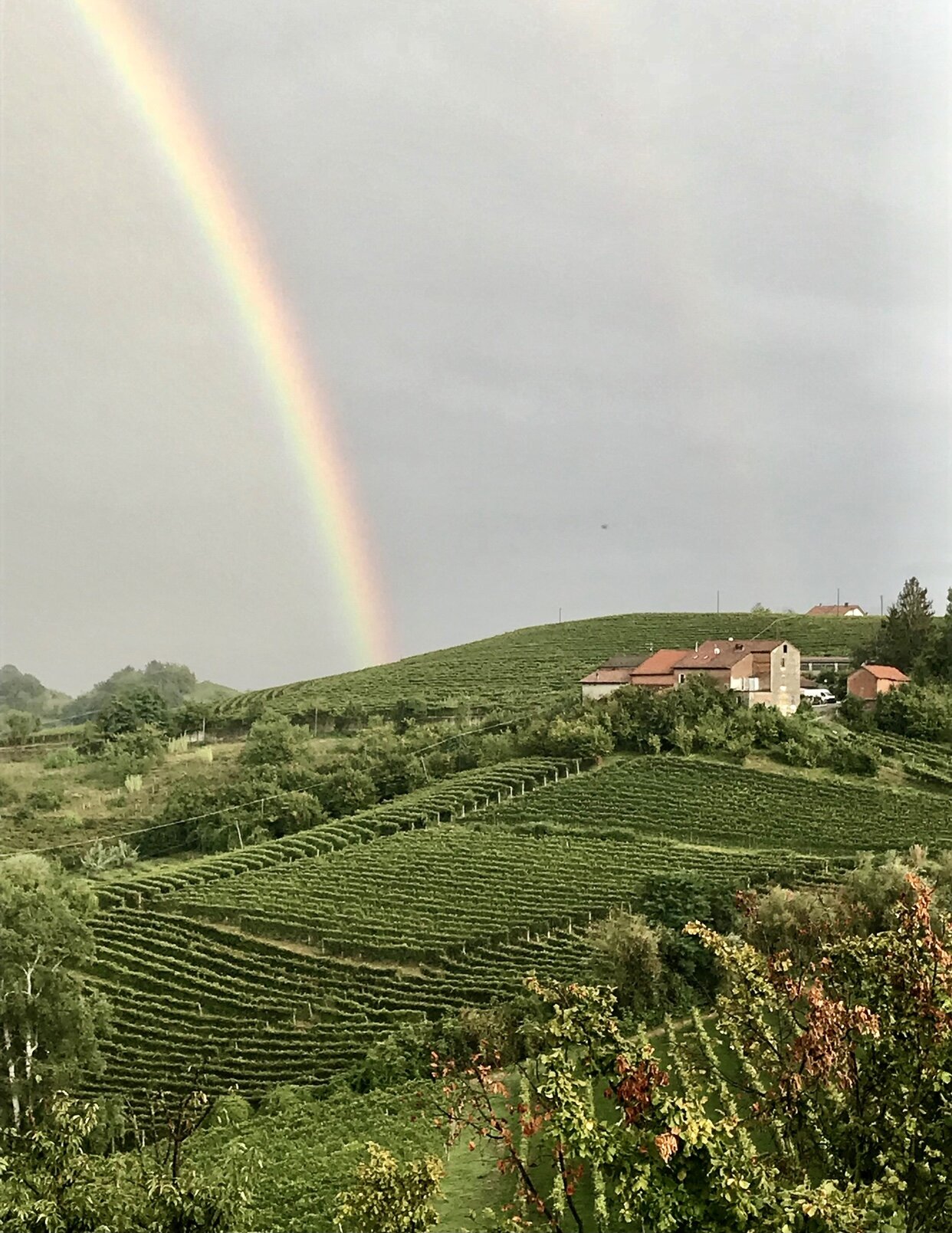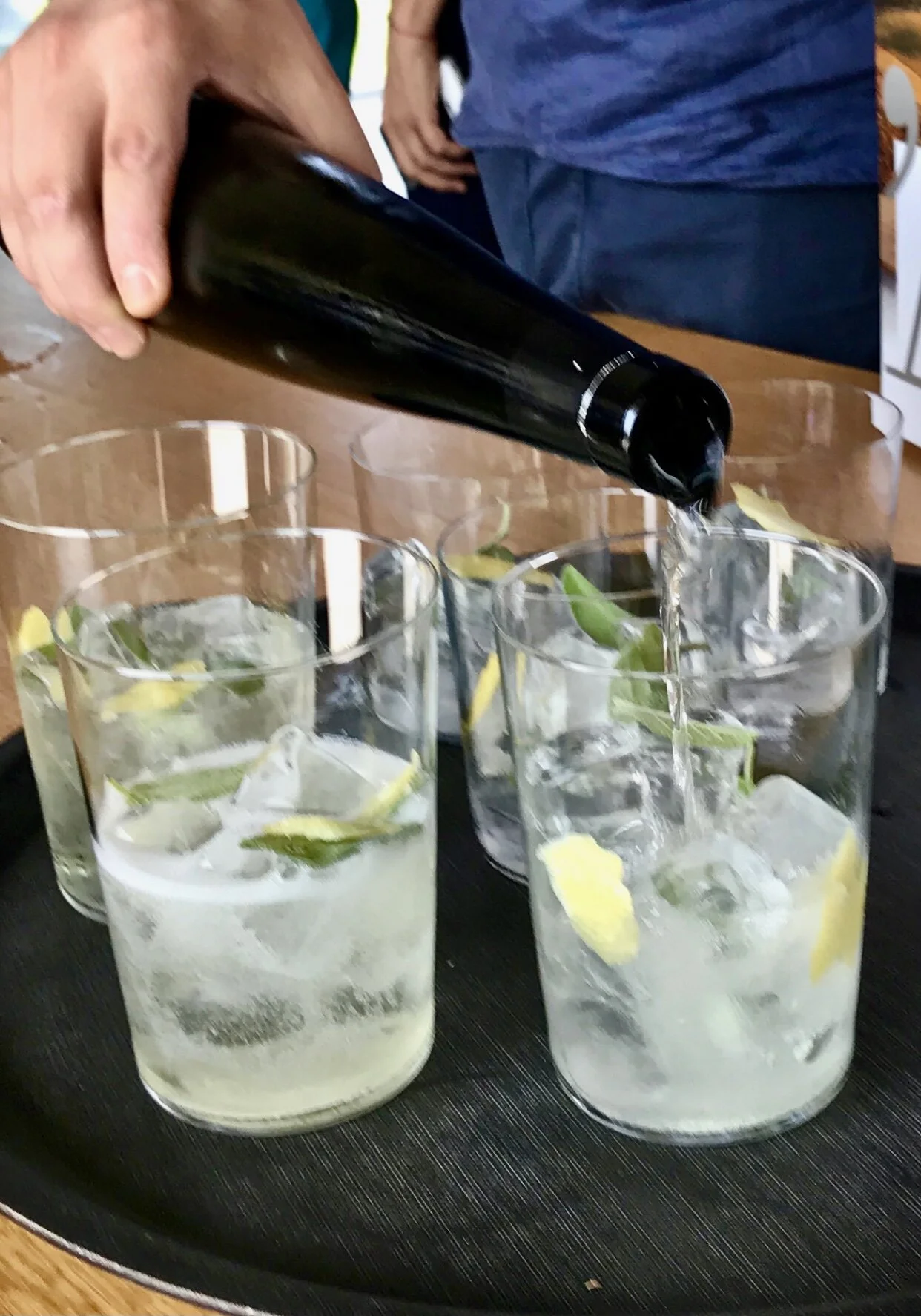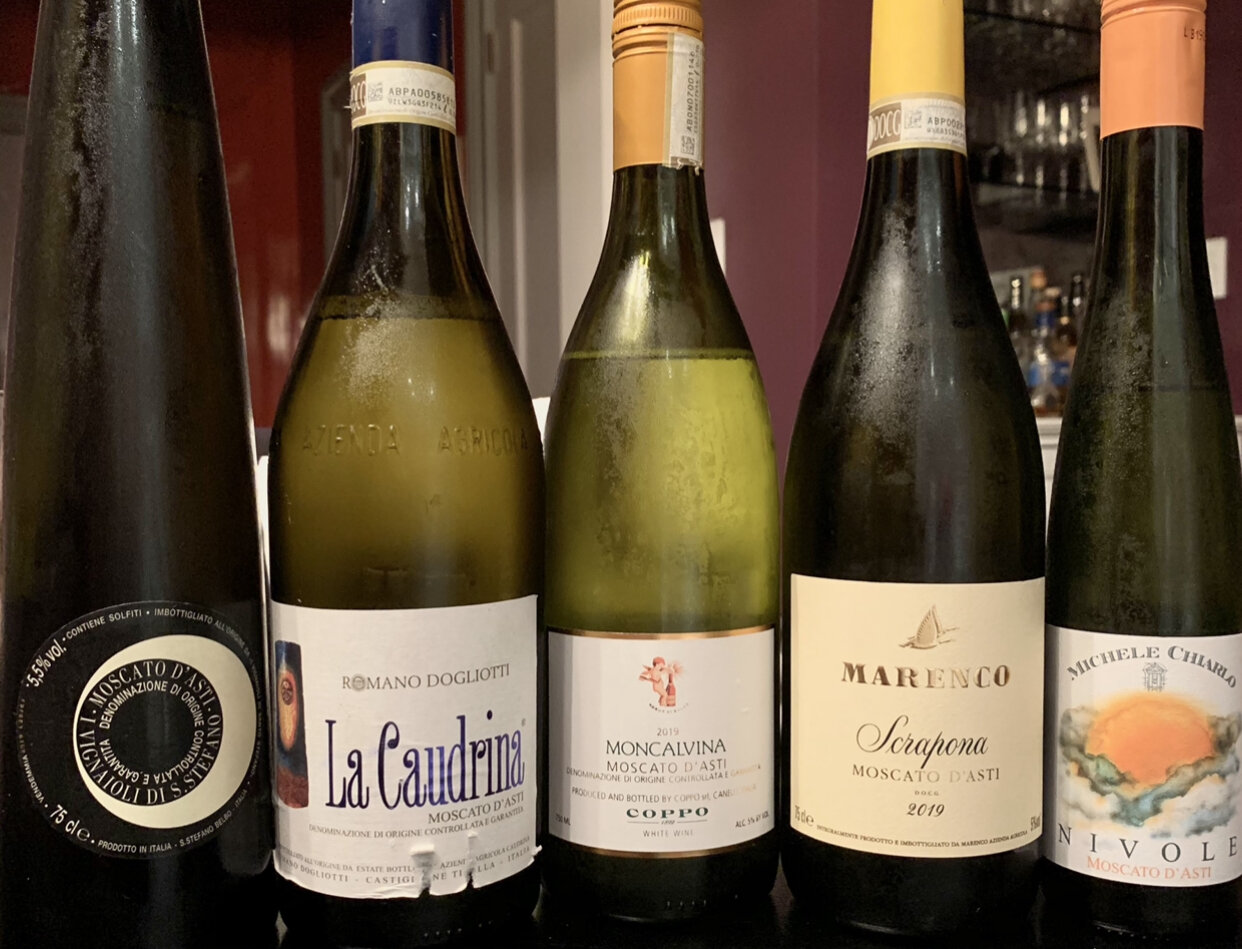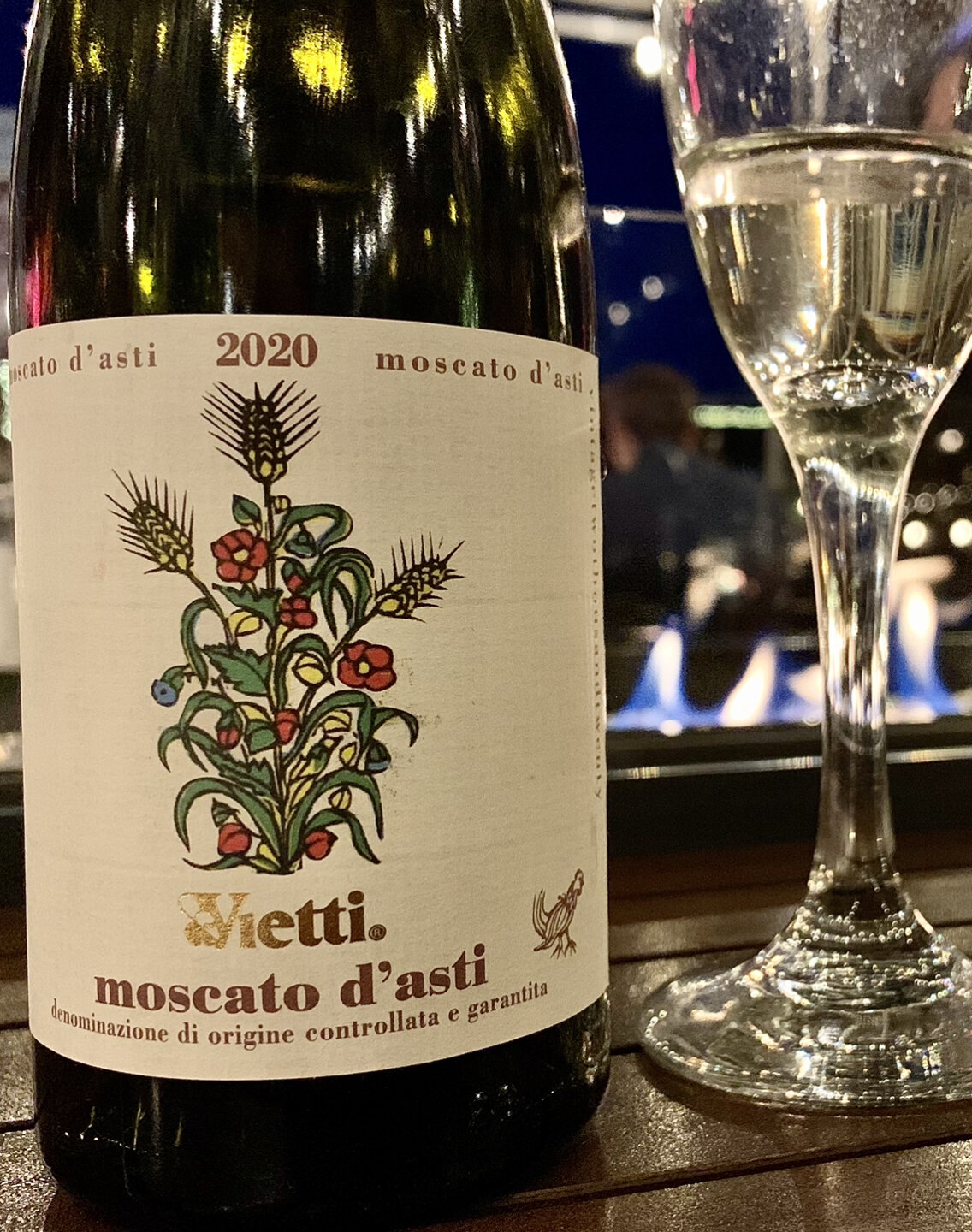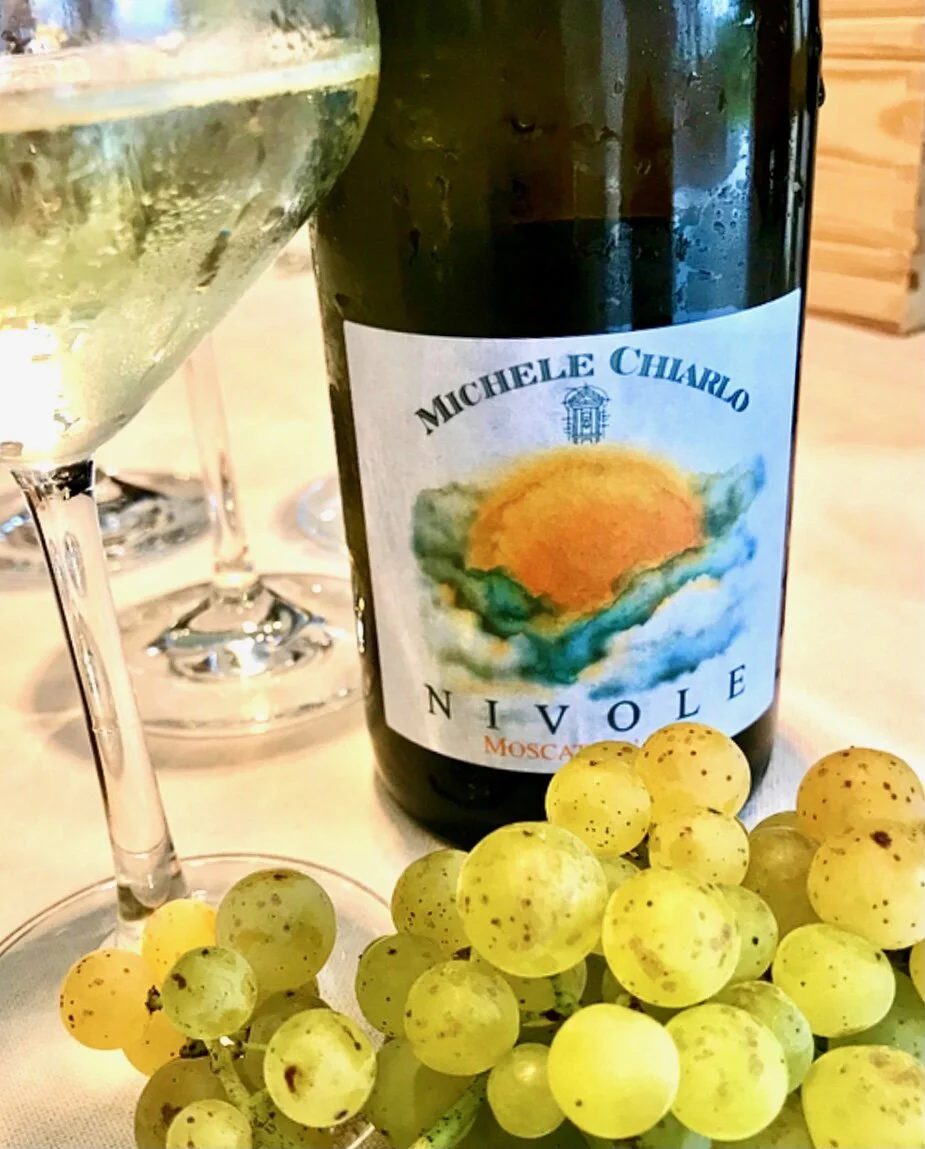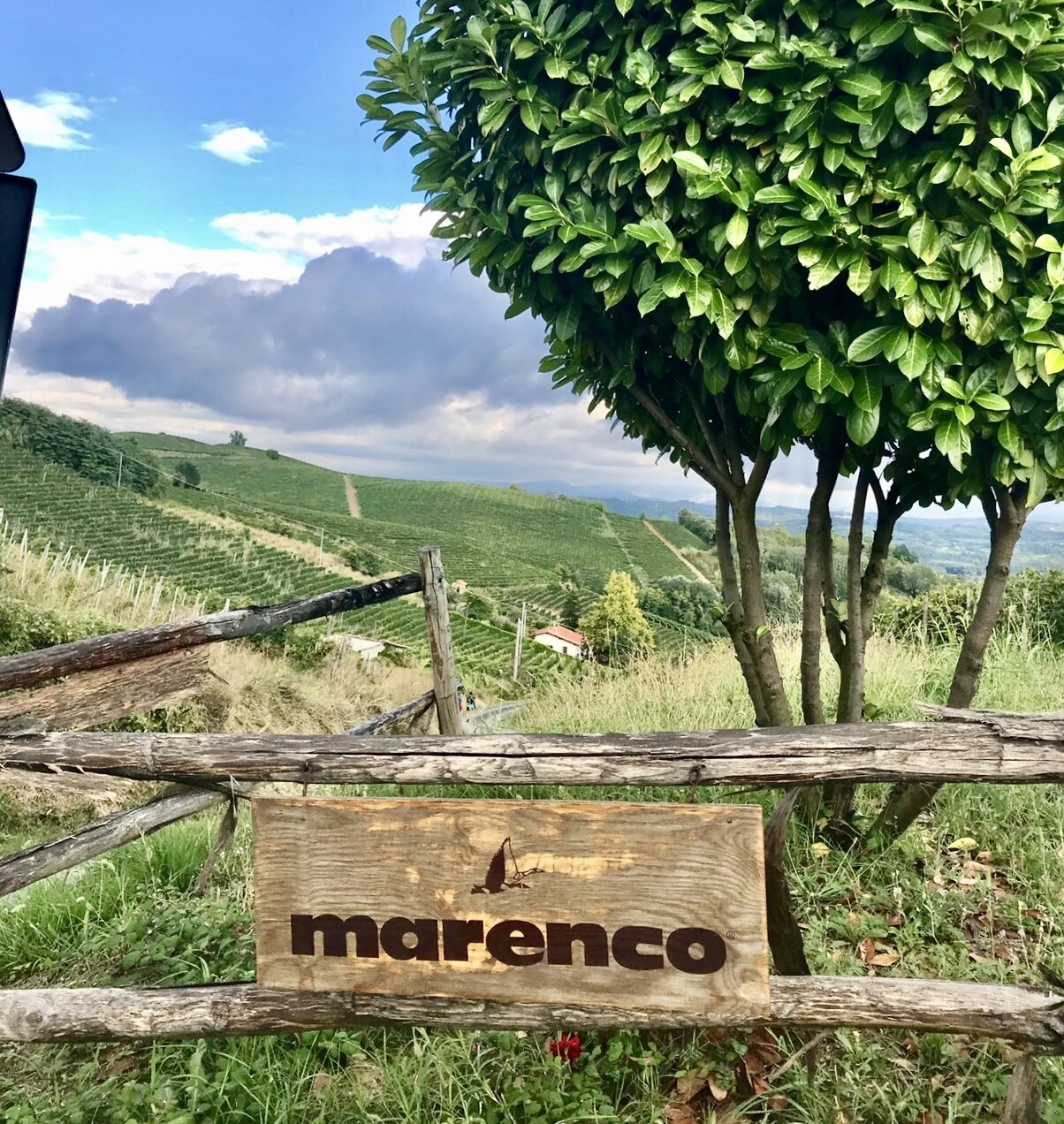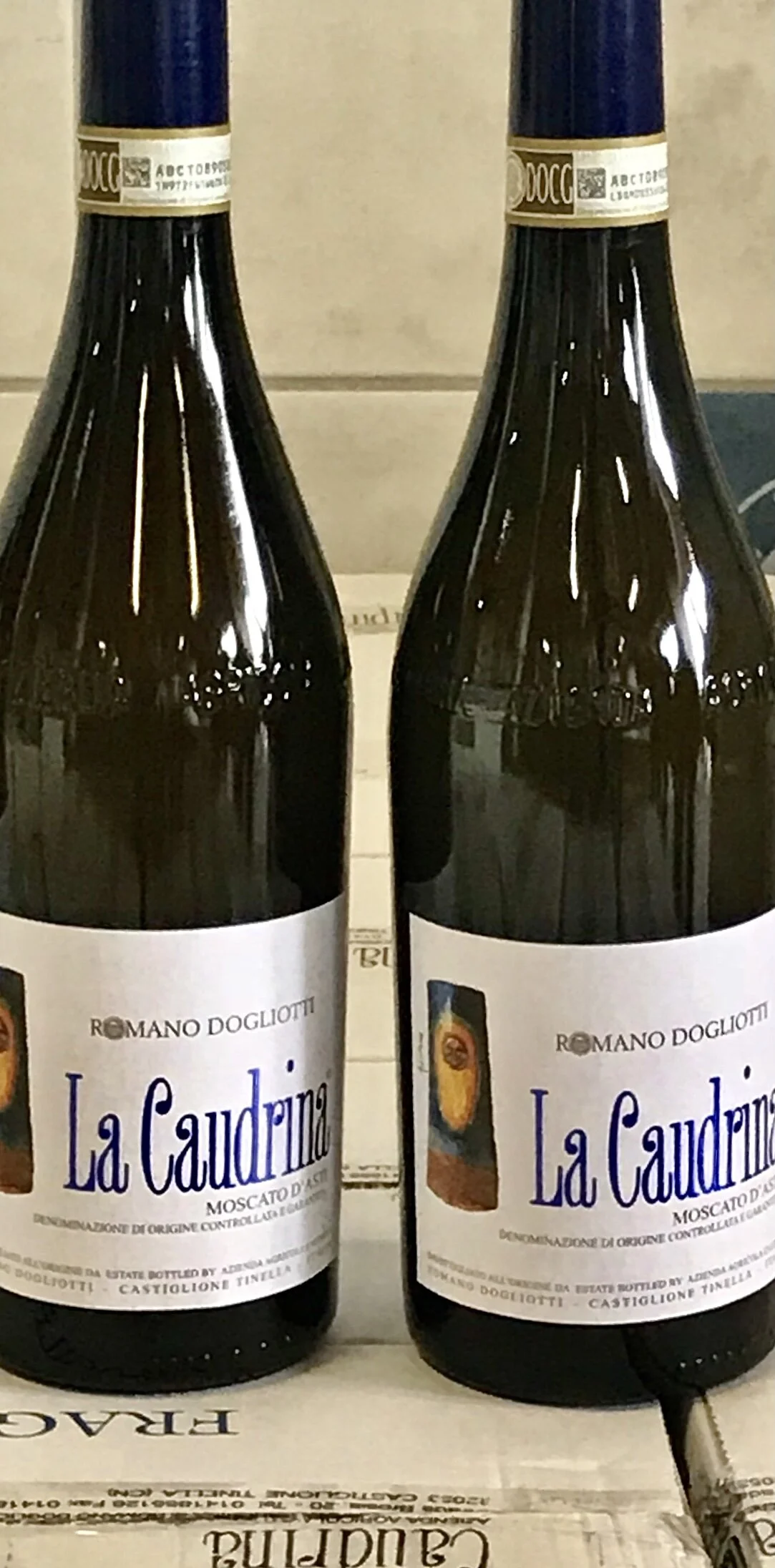Three Reasons Moscato d'Asti Should Be On Your Table This Summer
/Moscato d’Asti is a lightly sweet sparkling wine made in and around the town of Asti, in the Piedmont region of northwest Italy. Moscato Bianco (white Muscat), the grape from which it is produced, has been growing in the region for many centuries and is considered the variety from which all other moscatos evolved. Today, there are eight officially recognized Moscatos in the Italian National Register of grape varieties, however there are over 200 Muscat varieties worldwide that are made into still, sparkling, sweet and fortified wines..
Since 1993, the Moscato d’Asti wine appellation has fallen under Italy's highest category of production, DOCG. Along with the region’s famous red Nebbiolo wines, Barolo and Barbaresco, Moscato d’Asti is one of the most characteristic products of Piedmont winemaking and most of the top producers round out their portfolio with these wonderfully aromatic wines.
Not to be confused with the region’s Asti Spumante, also made from Moscato Bianco (and now simply called Asti), Moscato D’Asti is slightly sweeter, more gently sparkling, lower in alcohol and usually of higher quality.
The gorgeous green hills of Piedmont where Moscato Bianco thrives. All Photos by Lisa Denning.
Fun fact about the Muscat grape: it's the only variety which produces wine with the same aroma as the grape itself. You can actually smell the aroma out in the vineyards and then again in the glass!
History
The history of Moscato d’Asti goes much further back than most people realize, dating to the time of the Greeks when it was cultivated under the name Antilico. The ancient Romans renamed it Apianae after the bees (ape in Italian) which are attracted to the grape’s exquisite aromas of flowers, white peaches, apricot and sage.
In the early 16th century the Prince of Savoy, who was enamored with Moscato wine, decreed that one-fifth of all vineyards plantings in the area had to be with Moscato Bianco and anyone planting less would be fined. Savoy also stopped all other imports of vines to the area, a turning point in the history of Moscato and one that shows how important the grape was to the region.
Then there was Giovan Battista Croce, regarded as the “father” of Moscato d’Asti. A Milanese jeweler for royalty, he was also the owner of vineyards where he experimented with various vine-training systems. In his cellar, he perfected the techniques of making sweet, aromatic wines with low alcohol levels. People came from all over Piedmont to find out how he made his wine, so in 1606, he published a book called, “Of the Excellence and Diversity of Wines That Are Made on the Mountain of Turin and How to Make Them.” The book became a manual for the local Moscato d’Asti winemakers who wanted to make the best sparkling Moscatos.
The Three Reasons
Back in December of 2016 I wrote an article on why Moscato d’Asti should be at your holiday dinner. But recently, as I was sipping on a glass of this tasty bubbly while on vacation in Lake Tahoe, I started thinking that Moscato d’Asti is a great choice during the dog days of summer as well.
Here’s why.
1) It’s a Great Match With Food
Moscato d'Asti is typically considered a dessert wine, yet its versatility makes it perfect for the entire meal since it’s lightly sweet and never cloying. With delicate aromas and tastes that are reminiscent of peach, apricot, sage, lemon and orange blossom, the wine is great on its own served chilled, or with a variety of antipasti like melon with prosciutto, mortadella, blue or cheddar cheese and deep-fried vegetables. For the main course, the wine’s sweetness offsets the spiciness of typical summer dishes like grilled meats served with spicy relish or chili pepper-laced barbecue sauce.
And naturally, Moscato wines pair beautifully with desserts: fruit pies, creamy desserts, meringues, shuffles, berries and even chocolate. Additionally, the wine’s soft bubbles are easy on the palate and won’t aggressively overwhelm any subtle flavors of a dish.
When I was visiting the Asti region (thank you Consorzio dell'Asti DOCG), a favorite pairing with Moscato d’Asti was crispy sage leaves atop grilled shrimp, which I now enjoy making at home.
While there, I also discovered a great cocktail (see photo), made by pouring the wine over ice that had been muddled with fresh sage leaves and lemon slices. Talk about a refreshing summertime drink!
2) It's Low in Alcohol.
Moscato d'Asti is a refreshing wine that stimulates the appetite when served at the beginning of a meal and acts as a digestif at the end. By law, its alcohol content (ABV) cannot be higher than 5.5%. Compare that to most other sparkling wines which range in ABV from 11.5 to 12.5%, as well as red and white wines that can clock in at 14 to 15%.
It’s always a wise idea to offer your guests the choice of a beverage that’s lower in alcohol, especially on a hot summer day when we’re all in need of hydration. Even the kids can have a little sip with no ill effects, like they do in Italy!
3) It's a Great Value.
Wine doesn't have to be complicated or expensive to be enjoyable! A well-made, tasty Moscato d'Asti can be found for under $25, a bargain indeed.
Six Top Producers of Moscato d’Asti
Vietti. This highly regarded producer makes a large range of wines from Piedmont’s indigenous grape varieties and is well-known for its single vineyard Barolos. Vietti’s Moscato d’Asti is stunning, with intense aromas of peaches, rose petals and ginger and, on the palate— bright and fresh with a finish of fresh apricots.
Coppo. Luigi Coppo wants people to know that Moscato d’Asti is a serious wine of great quality. The Coppo winery was founded in 1892 and today, Luigi says that, due to climate changes, they focus on “keeping the wines fresh, with the right amount of acidity to balance the natural sweetness of the Moscato grape.” The Coppo Moscato d’Asti Canelli Moncalvina comes from the prestigious subzone of Canelli where Moscato has been cultivated since the 13th century. The wine is a standout; delicate and delicious, with floral, peach and pear notes.
Marenco. Grape growers since 1896, it was Giuseppe Marenco who started making his own wine in the 1950s. Today, Giuseppe’s three daughters have taken over his dream, overseeing all aspects of Marenco, from the cultivation in the vineyards, to wine production and the global marketing of these distinctive wines. Look for the Marenco Scrapona Moscato d’Asti, an elegant wine with tiny bubbles and subtle notes of citrus, honey, peach, sage and orange.
Michèle Chiarlo. Known as a fine producer of Barolo, the winery also produces a top-notch Moscato d’Asti named, for its delicate finesse, after the Italian word for clouds, nivole. Michèle Chiarlo Nivole is intensely aromatic with flavors of sage, apricot, peaches and white flowers. Check out my article on making a sweet custard called Zabaglione with Nivole here.
Moscato Bianco grapes and the wine made from them.
Ceretto. The winery, also famous for its single vineyard Barolos, makes a wonderfully complex and balanced Moscato d'Asti called Vignaioli di Santo Stefano Moscato D'Asti. The wine is full of melon, pear, and floral flavors balanced by a refreshing acidity.
La Caudrina. Winery owner Romano Dogliotti is considered "the king of Moscato" as he was one of the first small growers to bottle his own wine many years ago. La Caudrina Moscato d’Asti is a winner: pleasantly acidic with delicate aromas of flowers, orange blossom and peaches.


